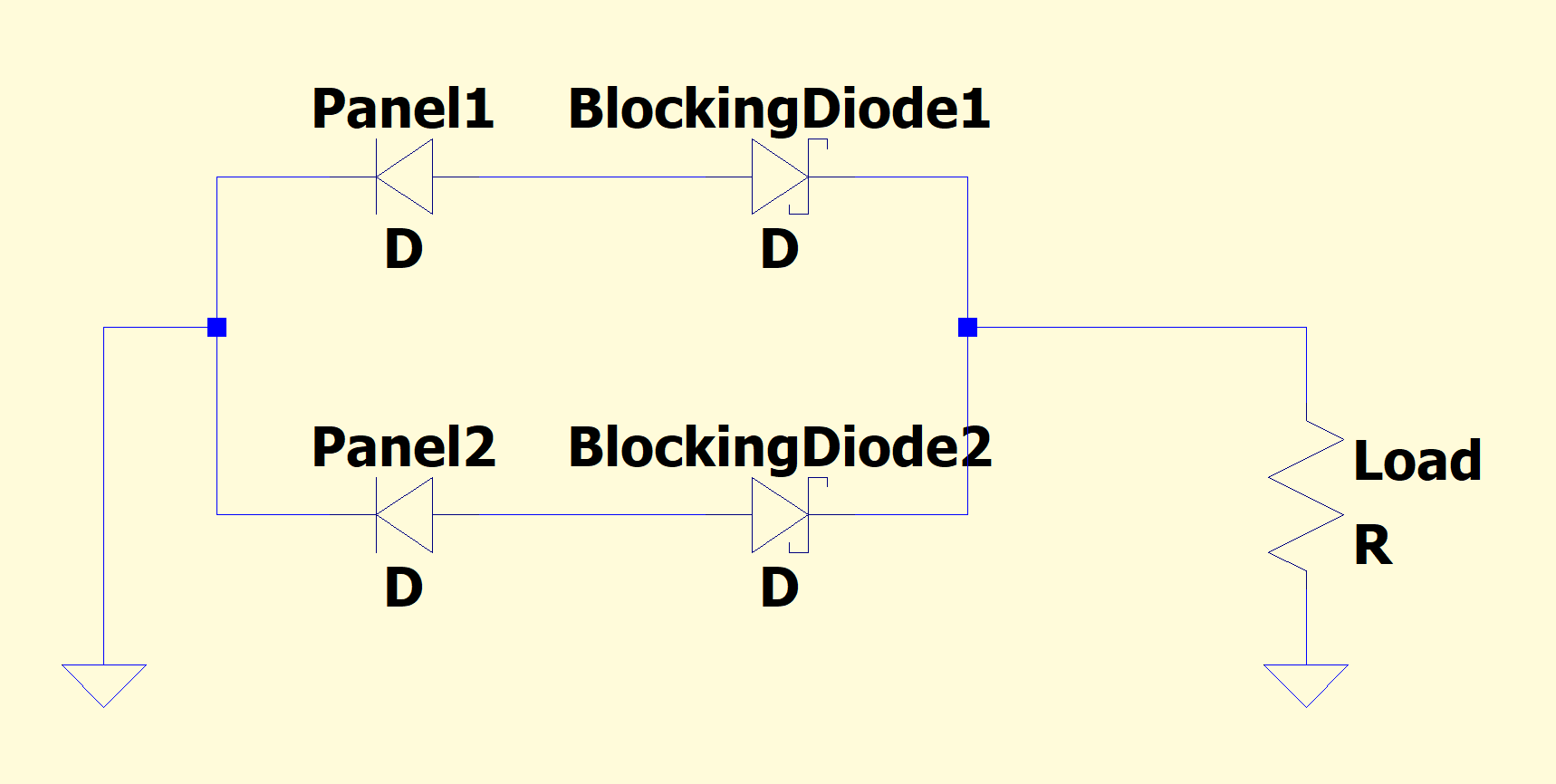 If one connects two technically identical solar panels in parallel (to increase current), many sources suggest to put each of the panels in series with a Schottky diode before joining these branches together in parallel. The rationale behind this seems to be that one of the panels does not drive a current through the other panel in forward direction (hence the name "blocking diode", as opposed to the bypass diodes that are part of modern panels anyway).
If one connects two technically identical solar panels in parallel (to increase current), many sources suggest to put each of the panels in series with a Schottky diode before joining these branches together in parallel. The rationale behind this seems to be that one of the panels does not drive a current through the other panel in forward direction (hence the name "blocking diode", as opposed to the bypass diodes that are part of modern panels anyway).
But the only situation where I think this could be practically relevant is when one of the panels is significantly shaded relative to the other and both are left open-circuit. Because then the open-circuit voltage of the brighter panel exceeds the oc-voltage of the dimmer one and hence, some fraction of the current runs back into the dimmer panel. Since the magnitude of this current can never exceed the current that a single panel is short-circuiting onto itself in open-circuit mode, this cannot represent an overload situation. So, there is only some loss of efficiency (somehow similar to the problem of shaded panels in parallel), but not the risk of destruction.
On the other hand, if the panels are run closed-circuit (because that is what we have them for) and near to the maximum-power-point, the operating voltage is probably already significantly lower than the open-circuit voltage of both panels, and hence, the forward current that the blocking diode is supposed to suppress, is not possible (or rather it is negligible) anyway.
So my conclusion would be that the blocking Schottky diodes do nothing in most practical situations, and in some rather rare situations only save some residual efficiency, but do not influence panel lifetime (at least unless there is an exterior circuit failure, e.g. of the inverter, that puts forward voltage on the panels that massively exceeds the open-circuit voltage, but that would be a problem already for single panels or series connections, not only parallel connections).
Is that correct?
PS: according to this topic, blocking diodes are recommended in general (independent of parallel or series arrangement of panels), in order for the battery not discharge over the panels. But I assume that everybody has a charge controller nowadays, which suppresses such situations. But even if it were necessary, why use several blocking diodes in parallel branches instead of just one? The only reason would be to avoid imbalance between panels, which is put into perspective by my introductory considerations.
Don't get me wrong, Schottky diodes are cheap, but I have aversions against unnecessarily complex designs.
